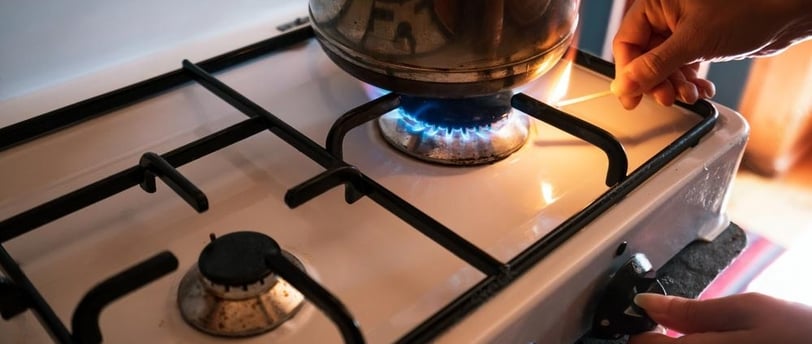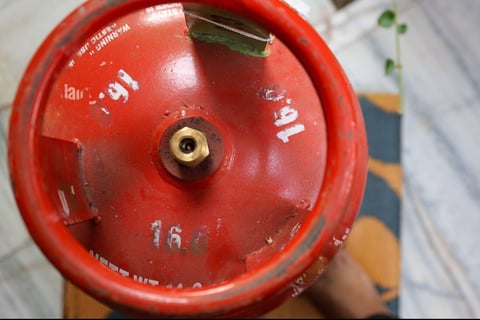What Are the Safety Checks After Gas Pipeline Installation?
Proper safety checks after the installation can provide peace of mind, reduce risks, and maintain the longevity of the system.
7/19/20243 min read


Ensuring safety after installing a gas pipeline is paramount to prevent potential hazards such as leaks, fire risks, or inefficiencies in your gas system. Proper safety checks after the installation can provide peace of mind, reduce risks, and maintain the longevity of the system. As a professional gas pipeline installer, here are some critical safety checks that must be conducted after installation:
1. Pressure Testing
Purpose: To ensure that the installed pipeline can withstand the required operational pressure without any leaks or damage. Process: This involves using specialized equipment to pressurize the gas pipeline and monitor it for any drops in pressure over a set period of time. If the pressure remains stable, it indicates that the pipeline is secure and leak-free. This test is usually performed with air or inert gases before introducing natural gas.
2. Leak Detection for gas pipeline installation
Purpose: Identifying any potential leaks that could pose serious safety risks. Process: Technicians use gas detectors or soapy water solutions to check for gas leaks at pipe joints, fittings, and valves. Any bubbles forming in the soapy water indicate a gas leak, which must be rectified immediately. Advanced detectors can also sense the presence of even minor gas leaks in the system.
3. Visual Inspection of Joints and Connections
Purpose: To visually verify the integrity of all joints, seals, and connections. Process: A thorough visual inspection ensures that all joints and fittings are correctly installed, sealed, and free from any visible defects. Loose connections or poorly installed fittings can lead to leaks, so a close inspection of these areas is crucial.
4. Valve Operation Check
Purpose: Ensuring all gas shut-off valves are functioning properly. Process: After installation, technicians must verify that all the shut-off valves can easily open and close without issues. These valves are essential for controlling the flow of gas and stopping the supply in case of emergencies. Properly functioning valves are key to ensuring the gas can be safely turned off when necessary.
5. Proper Ventilation Assessment
Purpose: Verifying that there is adequate ventilation to prevent gas buildup. Process: Gas systems need proper ventilation to dissipate any gas leaks or emissions, especially in confined areas such as basements or utility rooms. A professional will ensure that the installed pipelines are positioned in well-ventilated areas to avoid the accumulation of potentially harmful gases.
6. Appliance Connection Testing
Purpose: Ensuring that all gas appliances are securely connected and functioning correctly. Process: After the pipeline installation, each gas appliance (e.g., stoves, heaters, water heaters) connected to the system must be tested. Technicians will check whether the appliances receive an adequate gas supply, ignite properly, and function without leaks. Proper installation of appliances is key to maintaining a safe system.
7. Corrosion Protection Checks
Purpose: To confirm the pipeline has proper corrosion protection, especially for underground or outdoor pipelines. Process: For pipelines that are exposed to the elements or buried underground, ensuring corrosion protection is vital. Protective coatings, cathodic protection, and proper material selection are some of the preventive measures installed to keep corrosion at bay. Technicians will inspect for correct installation of these protective elements to extend the life of the pipeline.
8. Documentation and Compliance Verification
Purpose: To ensure the installation meets all legal and regulatory safety standards. Process: After completing all safety checks, the installation must be documented and compared to local safety codes and standards. Technicians ensure that the system complies with regional gas safety regulations, and all relevant permits are properly filed.
9. Customer Education
Purpose: To inform homeowners about the safe use and maintenance of the gas system. Process: Educating the homeowner or building manager about the newly installed gas pipeline system is an essential safety step. They should know how to detect gas leaks, how to operate gas appliances safely, and how to shut off the gas supply in case of an emergency. Proper education can help prevent accidents and ensure quick response in case of an issue.
10. Final Operational Testing
Purpose: To run the entire system under normal conditions and ensure it operates smoothly. Process: Finally, the gas pipeline system is put into full operation, with gas being supplied to the entire network. All appliances and components are checked once more to ensure that the system works as intended without any abnormalities.
Conclusion
Completing these safety checks after installing a gas pipeline is crucial to ensuring the longevity and reliability of the system. Regular maintenance, coupled with the initial post-installation safety checks, can help prevent future issues and keep your home or business safe. At Unity Gas Pipeline, we pride ourselves on adhering to the highest safety standards, ensuring that every installation is secure and efficient. Trust our team to deliver top-tier service for your gas pipeline needs.
contact us for any information related to gas pipeline installation services


Email Us
unitygaspipeline@gmail.com

At Unity Gas Pipeline Installation In Hyderabad, we are dedicated to enhancing the safety and comfort of your home with our expert LPG gas pipeline installations. Trust us to deliver reliable, efficient, and safe solutions tailored to your needs. Let us help you create a comfortable and secure living environment for you and your family.
Gas Pipeline Installation In Hyderabad & Secunderabad, Gas Pipeline Installation Service In Hyderabad & Secunderabad, Gas Pipeline Installation Service In Pragathi Nagar, Gas Pipeline Installation Service In Bachupally, Gas Pipeline Installation Service In KPHB, Gas Pipeline Installation Service In Panjagutta, Gas Pipeline Installation Service In Ameerpet, Gas Pipeline Installation Service In Sai Nagar, Gas Pipeline Installation Service In Moosapet, Gas Pipeline Installation Service In Kukatpally, Gas Pipeline Installation Service In Nizampet, Gas Pipeline Installation Service In Miyapur, Gas Pipeline Installation Service In Lingampally, Gas Pipeline Installation Service In Patancheru, Gas Pipeline Installation Service In Secunderabad, Gas Pipeline Installation Service In Banjarahills, Gas Pipeline Installation Service In Jubilee Hills, Gas Pipeline Installation Service In Madhapur, Gas Pipeline Installation Service In Hitech City, Gas Pipeline Installation Service In Kondapur, Gas Pipeline Installation Service In Gachibowli, Gas Pipeline Installation Service In Nallagandla, Gas Pipeline Installation Service In Tellapur, Gas Pipeline Installation Service In Manikonda, Gas Pipeline Installation Service In Chintal, Gas Pipeline Installation Service In Jeedimetla, Gas Pipeline Installation Service In Alwal, Gas Pipeline Installation Service In Malkajgiri, Gas Pipeline Installation Service In Sainikpuri, Gas Pipeline Installation Service In Ecil, Gas Pipeline Installation Service In Tarnaka, Gas Pipeline Installation Service In Uppal, Gas Pipeline Installation Service In LB Nagar, Gas Pipeline Installation Service In Dilsukhnagar.
Locations
Our Services
Call Us
© 2025 Unity Gas Pipeline Service. All Rights Reserved
